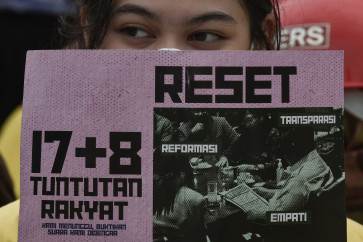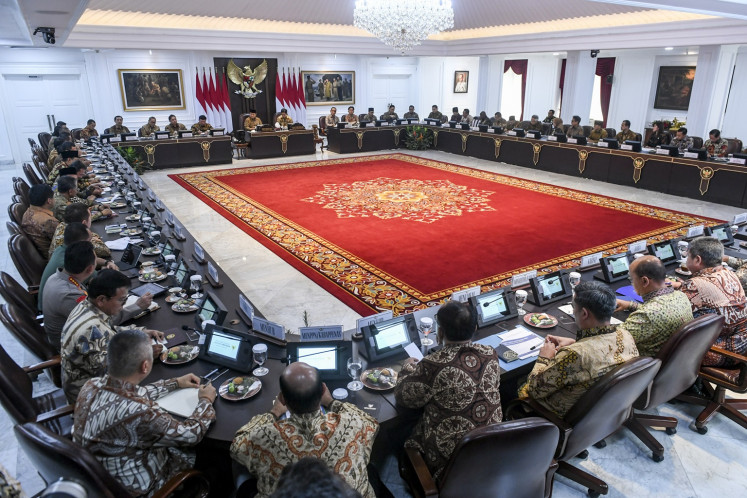Popular Reads
Top Results
Can't find what you're looking for?
View all search resultsPopular Reads
Top Results
Can't find what you're looking for?
View all search resultsBatik Fractals preserving and creating batik patterns
As Indonesia’s traditional icon, batik has shied away from embracing technology for hundreds of years
Change text size
Gift Premium Articles
to Anyone
As Indonesia’s traditional icon, batik has shied away from embracing technology for hundreds of years. This has resulted in a slow pace of development of batik, as most craftsmen create batik based on traditional designs.
But batik manufacturing is getting a modern touch through the use of fractal equations and a new technology jointly invented by Muhammad Lukman, Nancy Margried Panjaitan and Yun Hariadi from Pixel People Project Research and Design.
Nancy, head of the company, said that the program was not triggered by a love of batik.
“We love playing with science, visual art and technology. During our exploration, we accidentally found that batik patterns have all the elements. Therefore, batik patterns can be developed by computer technology,” Nancy said.
The trio developed the concept not just on scientific but cultural research too. They conducted experiments to develop new patterns using fractal mathematics and, with the help of two open source programmers, batik fractal software, or “jBatik” was born.
Since its launch, jBatik has received support from the Ministry of Research and Technology. Minister Kusmayanto Kadiman was one of the most prominent figures to wear jBatik designs.
In 2008, jBatik won the first Asia-Pacific Information and Communication Technology Award in the tourism and culture category. It also received an Award of Excellence from UNESCO last November.

Working in generative way and using artificial intelligence, “jBatik” can help designers create new patterns from traditional ones. All designers need do is to change the software’s parameters, such as angles, iteration or repetition, length, thickness and colors.
“There will be millions of design variants we can create just by changing one of the parameters,” she said.
According to Nancy, Pixel People has already developed 15 batik patterns. Some are traditional Javanese batik patterns and others are originals made from fractals applied by hand to the fabric.
“The 15 patterns are the basic patterns, which can be developed into unlimited design variants. For example, we had developed the Parang pattern into seven design variants,” she said, adding that her company would develop patterns from other regions in the near future.
The Pixel People Project is cooperating with Rumah Batik Komar, a garment house, to produce the batik. For the production, Nancy said that her company could made batik fractal as fabric or ready-to-wear clothing, depending on the consumer’s request.
Besides cooperating with Rumah Batik Komar, Pixel People Project also cooperates with designer Era Soekamto and Couture Collections for the ready-to-wear collection.
Designer Era Soekamto said that she decided to apply batik fractals in her collection because she wanted to preserve and develop batik as well as give the public and alternative and respond to technology development.
“I made a fractal version on Parang Rusak and Sekar Jagad patterns to show that a familiar pattern can have a whole new look after being developed. We must show that Indonesia can also be a pioneer in technology development,” she said.
She said that there was a controversy surrounding the use of batik fractal; some claim that is not real batik.
“While there are people sticking to the traditional batik, the controversy has made people interested in wearing batik fractals,” she said.
Era markets the batik fractals collection under the XLabel brand, which targets young executives and middle class – Xlabel aims for quantum and dynamic concepts.
“Batik fractals offer the public an alternative and new option on the techniques because people are starting to get bored with the old patterns. Batik is not a trend, but the national identity,” she said.
— Photos courtesy of Era Soekamto











